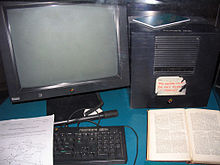How Steve Jobs Played A Role With The Invention Of The World Wide Web
23 Nov
Posted by RD Bentley as Future Tech
 When admiring fans think of the illustrious Steve Jobs, they visualize a marketing genius owning the stage. What many of us do not realize is this…Steve Jobs did play a role with the World Wide Web from the beginning.
When admiring fans think of the illustrious Steve Jobs, they visualize a marketing genius owning the stage. What many of us do not realize is this…Steve Jobs did play a role with the World Wide Web from the beginning.
So, if we state this correctly, the world’s first web browser was used on the NeXT Computer. This was a computer created by the company founded by Steve Jobs, after he was forced to leave Apple in 1985.
A NeXT Computer was used by Berners-Lee as the world’s first web server and also to write the first web browser, WorldWideWeb, in 1990. Has world’s oldest known WWW page been lost or found?
Tim Berners-Lee, a British computer scientist, launched the world’s first web browser on the NeXT Computer. The NeXT Computer was the basis for the Macintosh OS X and the iPhone operating system.
In March of 1989, Tim Berners-Lee offered a proposal to his boss, and the proposal was an information management system. His boss, Mike Sendall, gave the approval and the rest is history. Not long after this we have the invention of the World Wide Web (WWW). Tim Berners-Lee and Belgian computer scientist Robert Cailliau are considered the inventors of the Web.
On August 6, 1991, Berners-Lee published a short summary of the World Wide Web project on the newsgroup alt.hypertext (WorldWideWeb Summary). [Tim Berners-Lee, WorldWideWeb project, C.E.R.N., 1211 Geneva 23 Switzerland]
The first test was completed around December 20, 1990 and Berners-Lee reported about the project on the newsgroup alt.hypertext on August 7, 1991.
The first server outside Europe was installed at the Stanford Linear Accelerator Center (SLAC) in Palo Alto, California, to host the SPIRES-HEP database.
In 1989, CERN was the largest Internet node in Europe, and Berners-Lee saw an opportunity to join hypertext with the Internet [Academy of Achievement]:
“I just had to take the hypertext idea and connect it to the Transmission Control Protocol and domain name system ideas and—ta-da!—the World Wide Web… Creating the web was really an act of desperation, because the situation without it was very difficult when I was working at CERN later. Most of the technology involved in the web, like the hypertext, like the Internet, multifont text objects, had all been designed already. I just had to put them together. It was a step of generalising, going to a higher level of abstraction, thinking about all the documentation systems out there as being possibly part of a larger imaginary documentation system.”
Subscribe Now!
Featured Deal ➸
Social Button ➸
Categories
Archives
SQUIDBOARD
Academic Tech
Multimedia MegloMania
Tech Toolbox
- Acronis
- AN/GRC-9
- Apple Final Cut Pro
- Audacity
- Audacity VST Plug-ins
- BleachBit
- ClimateViewer 3D
- Cool Edit Pro 3.1
- CyberGhost
- Flickr
- FreeSCAN
- fring
- Fruper
- FTA Lists
- GPS Calculator
- GPS Converter
- HAMSOFT
- HF Antennas
- inSSIDer
- Levelator
- MaxMind
- Microphone Cables
- Morse Code Chart
- Old Version
- Pendriveapps.com
- PortableApps.com
- Privacy Badger
- PulseAudio
- Rowetel
- ShopJimmy
- Teleprompter Software
- TV Listings
- UNetbootin
- Voicemeeter Banana
- Winlink
RSS feed for comments on this post · TrackBack URI
Leave a reply